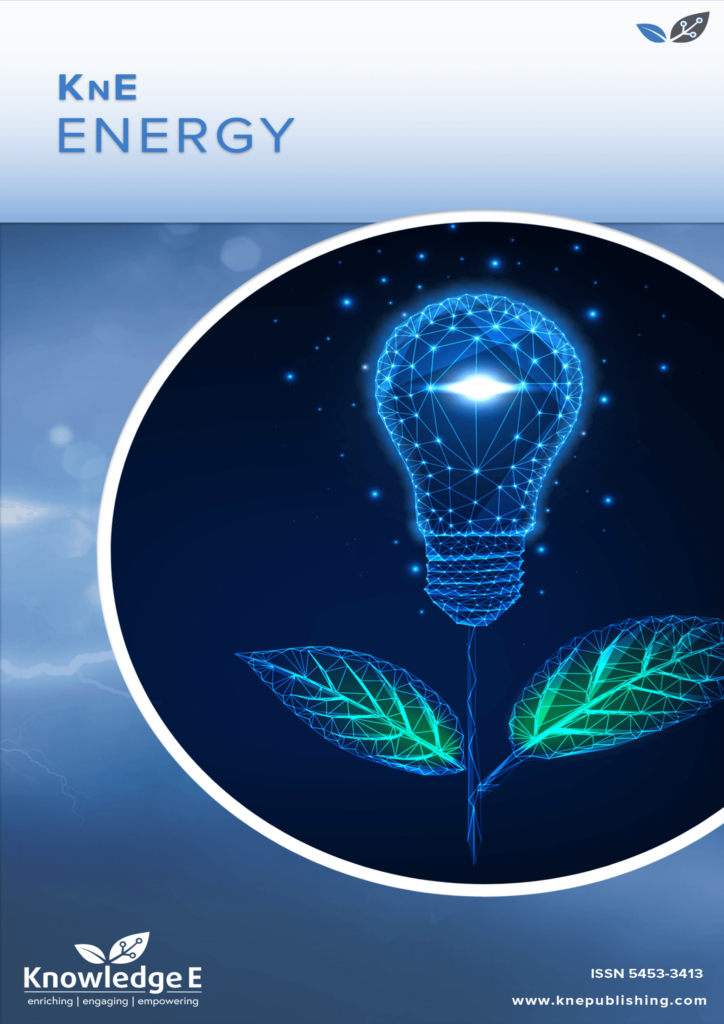
KnE Energy
ISSN: 2413-5453
The latest conference proceedings on energy science, applications and resources
Application Of 99m Tc Radioisotope In Diagnostic Procedures And Internal Radiation Dose Estimation
Published date: Sep 20 2016
Journal Title: KnE Energy
Issue title: International Conference on Nuclear Energy Technologies and Sciences (2015)
Pages: 134-143
Authors:
Abstract:
References:
IAEA, (2009), Technetium-99m Radiopharmaceuticals: Status and Trends, IAEA Radioisotopes and Radiopharmaceutical Series No.1, IAEA Publication, Vienna, pp. 1-2.
[2] NAE-OECD, (2010), The Supply of Medical Radioisotopes: Review of Potential Molybdenum 99/Technetium-99m Production Technologies, Nuclear Development Series, pp. 8-10.
[3] IAEA, (2008), TECHNETIUM-99m RADIOPHARMACEUTICALS: MANUFACTURE OF KITS, TECHNICAL REPORTS SERIES No. 466, IAEA Publication, Vienna, pp. 1-3.
[4] IAEA, (2002), Radiological Protection for Medical Exposure to Ionizing Radiation, Safety Standard Series No. RS-G-1.5, IAEA Publication, Vienna, 2002, p.2.
[5] FOOD AND AGRICULTURE ORGANIZATION OF THE UNITED NATIONS, INTERNATIONAL ATOMIC ENERGY AGENCY, INTERNATIONAL LABOUR ORGANIZATION, OECD NUCLEAR ENERGY AGENCY, PAN AMERICAN HEALTH ORGANIZATION, WORLD HEALTH ORGANIZATION, (1996), International Basic Safety Standards for Protection against Ionizing Radiation and for the Safety of Radiation Sources, Safety Series No. 115, IAEA, Vienna.
[6] ICRP(1987), ICRP Publication 53: Radiation Dose to Patients from Radiopharmaceuticals, Oxford: Pergamon Press; 1987.
[7] ICRP (1998), ICRP Publication 80: Radiation Dose to Patients from Radiopharmaceuticals: (Addendum 2 to ICRP Publication 53). Oxford: Pergamon Press.
[8] ICRP (2008), ICRP Publication 106: Radiation Dose to patients from Radiopharmaceuticals. Addendum 3 to ICRP Publication 53. Oxford: Elsevier.
[9] “Front Matter.” Medical Isotope Production Without Highly Enriched Uranium . Washington, DC: The National Academies Press, 2009, p. 17.
[10] IAEA website – Human Health Campus : Design principles of the 99Mo → 99mTc radionuclide generator, accessed from : http://nucleus.iaea.org/HHW/Radiopharmacy/VirRad/Eluting_ the_Generator/Generator_Module/Design_principles/index.html
[11] Jürgens, S., Herrmann, W. a., & Kühn, F. E. (2014). Rhenium and technetium based radiopharmaceuticals: Development and recent advances. Journal of Organometallic Chemistry, 751, 83–89.
[12] Fahey, F., & Stabin, M. (2014), Dose Optimization in Nuclear Medicine, Seminars in Nuclear Medicine, Volume 44, Issue 3, May 2014, Pages 193-201.
[13] IAEA, (2006), Nuclear medicine Resources manual, IAEA Publication, Vienna.
[14] BAPETEN, The decree of BAPETEN head no.17 year 2012, Radiation Safety in Nuclear Medicine Department.
[15] Hidayati, N.R, et al, (2014), Assessment of Internal Dosimetry due to the Administration of 99mTc-Sestamibi in Nuclear Medicine, International Conference on the Sources, Effect and Risks of Ionizing Radiation, Bali 10-11 October 2013.
[16] Nayar, A. K., et al, (2013). Radiation Exposure and Associated Cancer Risk With Cardiac Diagnostic Imaging, 2(2), J Am Osteopath Coll Radiol 2013; Vol. 2, Issue 2.
[17] Marine, P. M., et al. (2010). Changes in Radiation Dose with Variations in Human Anatomy: Larger and Smaller Normal-Stature Adults. Journal of Nuclear Medicine : Official Publication, Society of Nuclear Medicine, 51(5), 806–811.
[18] Stabin, M. G., Sparks, R. B., & Crowe, E. (2005). OLINDA/EXM: the second-generation personal computer software for internal dose assessment in nuclear medicine. Journal of Nuclear Medicine : Official Publication, Society of Nuclear Medicine, 46(6), 1023–7.
[19] IAEA, (1998), Compilation of Anatomical, Physiological and Metabolic Characteristics for a Reference Asian Man, IAEA TECDOC 1005, Volume : 1 , Data Summary and Conclusion, IAEA Publication, Vienna.
[20] Koga, O. (2010). Accuracy of 99mTc- sestamibi scintimammography for breast cancer diagnosis, (1331), 205 - 209.
[21] Marine, et al. (2010), Changes in Radiation Dose with Variations in Human Anatomy: Larger and Smaller Normal-Stature Adults, J Nucl Med. 2010 May ; 51(5): 806–811.
[22] Hansson, E. (2012). The Internal Radiation Dosimetry of Diagnostic Radiopharmaceuticals across Different Asian Populations, MSc.Thesis University of Gothenburg, download from : http://radfys.gu.se/digitalAssets/1360/1360082_edvin-hansson-rapport.pdf.